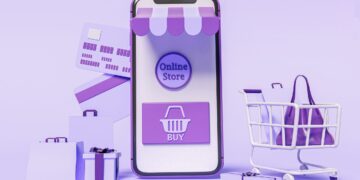
Without realising it, you have probably already used applications built using Flutter. Even while Flutter is still in its infancy, its impacts may already be seen by anybody who has used a digital coupon, run an ad campaign on Google Ads, paid using Google Pay, or shopped on Alibaba. In this article, we will learn all there is to know about Flutter, with an emphasis on Future for cross platform development.
There’s no doubting the pervasiveness of smartphone applications in today’s society. However, the question of what kind of technology we may utilize to make mobile applications arises.
The rising importance of mobile apps in our everyday lives has resulted in a need for platforms with Flutter support, which are enhancing the app development business. Flutter is one of the most popular and powerful cross-platform app development tools. However, you’ll need the proper resources to build high-quality, responsive applications that your consumers will love.
Flutter has certainly been making waves in the world of cross-platform app development, but where does it go from here? Will it maintain its appeal in the years to come? How come if that’s the case? Let’s dissect this down to the last detail.
Summary of the Flutter
Flutter, a new front-end framework developed by Google, may be used to build high-quality, portable mobile applications for a variety of platforms. The underlying language is Google’s Dart programming language.
Flutter for web development was developed in response to the constraints of dominant app development frameworks like iOS and Android. Because of this, Google has developed a new programming language called Flutter, which allows developers to construct mobile apps that run on several platforms with a fraction of the time, effort, and cost required by using native code.
Flutter reached a major milestone when it transitioned from being used just for Android and iOS app development to becoming a cross-platform technology that allows developers to build complex applications that perform beautifully on the web and desktop browsers that run on Windows, Linux, and macOS.
Why the Future of Flutter in Cross-Platform App Development bright?
Google’s open-source framework makes it easy to create native applications for both iOS and Android. Flutter is a software development kit that includes modifiable pre-made widgets.
In addition, this modern framework has a variety of optional extras, such as free, open-source libraries and tools for creating specialized applications from a shared code base, which is ideal for creating both mobile and web-based products. The future of Flutter is bright, so let’s take a look at some of the strong arguments that represent why and what it implies for the developer community.
- Wide Variety of Adaptable Modules
Flutter has a wide variety of widgets that may be used to design user interfaces. The flexibility and reusability of the widgets bode well for their incorporation into new projects. Flutter also includes the Cupertino and Material Design widget libraries.
Material Design is Google’s implementation of their design, whereas Apple’s iOS Human Interface Guidelines are executed in Cupertino. This opens up a vast array of possibilities for designers to build polished software.
- Flagship Feature – Hot Reload
The Flutter framework has this as a primary function. It allows Flutter app developers to make changes to the source code and immediately see how they look in the live app. What sets this feature apart from others is its capacity to update itself without requiring a recompile of the source code or a restart of the program.
In addition, the Hot Reload function may cut down on the amount of time needed for app debugging development. Flutter is built on top of the computer language Dart, which has two compilation modes that greatly improve the development experience.
- Ahead-of-Time (AOT)
- ust-in-Time (JIT) systems
In the long run, these two settings will help engineers save time and speed up their work.
- Code Once, Run Everywhere
Extra credit is given for this quality. Flutter-based apps solely utilize the Dart programming language. It’s reusable, and it eliminates the need to retain several, platform-specific directories and files.
Because just the dart language is used, and the code only has to be generated once for all platforms, it is easier for developers to incorporate the most unique and critical features. In addition, when the code has been made public and downloaded by consumers, developers may easily add or change features in response to feedback and market research.
- Developers’ Preference for Flutter Grows
In January 2021, one of the most popular platforms, Flutter, surpassed React Native to become the most popular database of projects on GitHub with more than 109,600 stars.
It’s still number 16 (out of over a thousand other options) despite receiving around 20% more praise than similar alternatives. For developers with Swift or Java knowledge, Flutter’s Dart programming language is an easy transition.
Flutter is app-oriented rather than platform-oriented, therefore it removes most platform-related worries off the developer’s plate. Flutter is an emerging application platform with stable and well-documented APIs, a variety of educational resources, and a fantastic Widget of the Week series.
- Incredibly Preferred by the MVP
When it comes to developing a minimum viable product, Flutter is a fantastic alternative. Since there is just one codebase, developing for many platforms, like iOS and Android, is faster and cheaper.
Hot reload allows programmers to quickly try out new ideas, incorporate cutting-edge features, and fix bugs. The time and effort needed to onboard new resources is minimized using this open-source platform.
As a Google-backed framework, it has widespread adoption and widespread trust.
This cross-platform SDK is loaded with useful tools, which is why it has gained popularity.
Mobile applications created with Flutter look and feel more like they were meant to be there.
- Accelerates and simplifies the design process
Flutter has conquered every coding and testing difficulty, user interface and user experience hurdle, security review, etc. Previously, developing for many platforms from a single source codebase was not possible.
There are several ways in which programmers have benefited from the introduction of hot reload. The ability to simply and rapidly find vulnerabilities and problems in the code before it is written.
Flutter employs a rapid and efficient process for program creation. It’s the programmers’ secret hope that they can escape the cumbersome framework. If you can surprise your customer by delivering the app early, you will.
Due to its cheap overhead, Flutter is a fantastic choice for startups on a shoestring budget. For instance, a firm may have previously paid a web designer at least $75 per hour, and is now anticipating spending the same or more on application developers. Flutter is a helpful development option for businesses on a budget since it reduces development time and increases time to market.
- Simple to Set Up and Keep Working
Because there is just one codebase to manage, developing and updating Flutter applications is a breeze. This results in better performance and less need for upkeep. Also, because just a single file of code is used, keeping Flutter updated is a breeze.
The problem may be identified and fixes made instantly without the need to share codes around the team. It saves money since expensive equipment is unnecessary. With the help of the development team, creating a Flutter app is a breeze for everyone.
- Robotic Test Execution
It takes a lot of time and money to test an application. However, if you decide to use Flutter as your cross-platform app development platform, you may simplify and streamline this process. Moreover, using automated testing, designers may check the app’s usability, functionality, and UI in record time.
It also ensures your program’s above-average performance before it’s released to the general public. Professionals perform automated tests in a number of domains without slowing down the app’s functionalities or ability to repair bugs.
Conclusion
It’s not likely to be the only development in the future, but it will surely be a part of many. Flutter comprises the user interface (UI) for Google’s next operating system, Fuchsia.
If Google were to stop supporting Flutter, the Fuchsia UI would be removed. Without a user interface (UI), an operating system is useless. Unless they planned to create a new framework and compel everyone to use it, Google would have no need for it.
Google might perhaps terminate Flutter, although this is far less likely than the company leaving the search engine market altogether. It would be a waste of around 10 years of time if they did.
Therefore, flutter mobile app development company with limited means should invest in the services of seasoned Flutter developers to help them transform their app ideas into workable enterprise solutions. Based on the discussion above, it’s evident that Flutter is a cutting-edge platform for mobile app creation.
























































